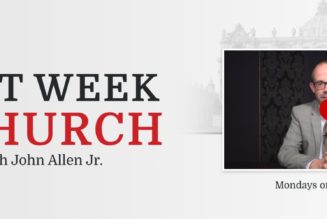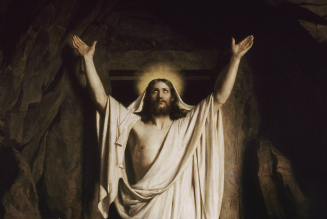
Let’s consider this an educational moment. Since journalists are paying lots of attention, right now, to Christianity Today and other things linked to the late Billy Graham, let’s do a flashback to some poll numbers published in the fall of 2018.
This polling was done by the Billy Graham Center Institute at Wheaton College, working with LifeWay Research. One of the goals was to understand why evangelicals voted the way that they did in 2016.
Lots of things grabbed my attention, but here are some numbers that I think journalists need to ponder at the moment in light of the recent CT editorial by departing editor Mark Galli. You may have heard about it. The headline proclaimed: “Trump Should Be Removed from Office.”
But back to CT in 2018. The bytes that jumped out at me:
* Only half of the evangelicals polled voted for the candidate that they truly wanted to support in the White House race.
* One out of three said that they voted AGAINST Hillary Clinton or AGAINST Donald Trump.
* One in four white evangelicals said that they voted AGAINST Trump. One in three black evangelicals said the same thing.
* At least 20% of evangelicals didn’t vote (and I’ve seen figures as high as 40% elsewhere).
Put it all together and a high percentage — 77% in this poll — of white evangelicals did said that they voted for Trump. However, echoing earlier CT reporting, only about half of them said that they wanted to do so.
I wrote a national column about that with this headline: “Complex realities behind that ‘81 percent of evangelicals love Trump’ media myth.” Here’s how it ended:
Waves of news about this 81 percent vote have “created a simplistic, negative caricature of who evangelicals are, right now,” said Ed Stetzer, director of the Billy Graham Center. “It allows lazy people to keep saying that all of those evangelicals are ‘all in’ for Donald Trump. … They’re trying to turn Trump voters into Trump.
”Trump voters are not Trump, and that’s certainly true for most evangelicals.”
So what’s the Big Idea that journalists need to learn from all of this, including the Galli editorial?
Here it is: There is, apparently, one simplistic belief to which Trump and the vast majority of elite political journalists in America faithfully cling — that there is a giant monolith of white evangelical voters who really, really love Trump.
Trump is wrong. So are the journalists who embrace the same point of view (perhaps because they really need someone to blame for Trump’s victory).
<div class="sqs-block embed-block sqs-block-embed" data-block-json="{"version":"1.0","floatDir":null,"resolvedBy":"twitter","providerUrl":"https://twitter.com","resolved":true,"authorName":"Ryan Burge \uD83D\uDCCA","resolveObject":"Tweet","authorUrl":"https://twitter.com/ryanburge","hSize":null,"type":"rich","url":"https://twitter.com/ryanburge/status/1208034095365869569?ref_src=twsrc%5Etfw%7Ctwcamp%5Etweetembed%7Ctwterm%5E1208034095365869569&ref_url=https%3A%2F%2Fwww.getreligion.org%2Fgetreligion%2F2019%2F12%2F23%2Fwhats-the-one-thing-journalists-need-to-learn-from-the-christianity-today-firestorm","width":550,"height":null,"cache_age":"3153600000","providerName":"Twitter","html":"
What’s it actually look like when a story goes viral? Well, @CTmagazine provided a great test case last night. I started scraping tweets (almost 100k in total) with the rate reaching 700 shares per minute.
Sentiment analysis is in there as well. https://t.co/4F9Y4Lqn0G
\u2014 Ryan Burge \uD83D\uDCCA (@ryanburge) December 20, 2019
\n"}” data-block-type=”22″ id=”block-yui_3_17_2_1_1577194387185_119911″>
What’s it actually look like when a story goes viral? Well, @CTmagazine provided a great test case last night. I started scraping tweets (almost 100k in total) with the rate reaching 700 shares per minute.
Sentiment analysis is in there as well. https://t.co/4F9Y4Lqn0G
— Ryan Burge
(@ryanburge) December 20, 2019
With that in mind, let me point readers to some interesting editorials and features linked to Galli and that CT editorial.
I know that this list is one-sided.
The point here is not to pound Trump supporters with #NeverTrump ink. The point that I am making is that lots of journalists need to realize that are important fault lines among doctrinally conservative evangelicals, when it comes to the Trump era. Way too many political-beat journalists have been ignoring important stories in recent years.
* Start here (as recommended by our own Bobby Ross, Jr.) with the Marvin Olasky piece at World magazine that ran before the election: “Unfit for power — It’s time for Donald Trump to step aside and make room for another candidate.” Where are the mainstream press interviews with Olasky, right now?
* Then, as deep background, read the 1998 Southern Baptist Convention resolution entitled, “On Moral Character Of Public Officials.”
* Still in the past, please note this 2016 piece by the famous evangelist Max Lucado: “Decency for President.”
* Then there is #NeverTrump leader David French, now writing for The Dispatch: “Christianity Today Exposed the Reality of Evangelical Division — Here’s why a single editorial ignited an online firestorm.” French points readers to an important NPR piece about clashing definitions of the term “evangelical.” Note: Only 6% of Americans are “evangelicals,” if the definition centers on shared doctrinal beliefs.
* Keeping it in the French family, here is a Nancy French op-ed from The Washington Post: “Christianity Today’s op-ed isn’t attacking Trump. It’s defending Christianity.”
* Over at National Review, Kathryn Jean Lopez ponders the role that the Democratic Party is playing in sustaining all of this evangelical support — reluctant or not — for Trump.
* Baylor historian Thomas Kidd has been writing like crazy, which is understandable since his new book is entitled, “Who Is an Evangelical?: The History of a Movement in Crisis.” Check out this essay at The Gospel Coalition: “Christianity Today and Evangelical Anti-Trumpism.”
* No surprise here. Emma Green at The Atlantic offered this must-read Q&A interview with Galli: “How Trump Lost an Evangelical Stalwart.”
* Reporters should dig into an angry tweet storm by an Anglican theologian, Father Kendall Harmon. Click here to kick that off. There are evangelical Anglicans, after all.
* I could go on and on. There is this from veteran religion-news columnist Mike McManus, an evangelical best known for his work helping churches strengthen modern marriages. His blunt headline: “Trump, the Liar, Should Be Convicted.”
* Let’s end with this follow-up on the Galli editorial: “The Flag in the Whirlwind: An Update from CT’s President.”
Well, there is one more thing.
Please allow me to end with something I have shared several times here at GetReligion. It’s a typology that I pounded out in an attempt to illustrate what I believe are the six Trump-era camps inside American evangelicalism.
The question I would like to ask loyal readers who have made it to this point, on Christmas Eve: Based on the contents of his editorial, where would you place Galli in this grid?
(1) Many evangelicals supported Trump from the get-go. For them, Trump is great and everything is going GREAT.
(2) Other evangelicals may have supported Trump early on, but they have always seen him as a flawed leader — but the best available. They see him as complicated and evolving and are willing to keep their criticisms PRIVATE.
(3) There are evangelicals who moved into Trump’s tent when it became obvious he would win the GOP nomination. They think he is flawed, but they trust him to – at least – protect their interests, primarily on First Amendment issues.
(4) Then there are the lesser-of-two-evils Trump evangelicals who went his way in the general election, because they could not back Hillary Clinton under any circumstances. They believe Trump’s team has done some good, mixed with quite a bit of bad, especially on race and immigration. They think religious conservatives must be willing to criticize Trump — in public.
(5) There are evangelicals who never backed Trump and they never will. Many voted for third-party candidates. They welcome seeing what will happen when Trump team people are put under oath and asked hard questions. … However, they are willing to admit that Trump has done some good, even if in their heart of hearts they’d rather be working with President Mike Pence.
(6) Folks on the evangelical left simply say, “No Trump, ever.” Anything he touches is bad and must be rejected. Most voted for Clinton and may have yearned for Bernie Sanders.
Be kind. Whatever you think of the CT editorial, the staff there have had it rough during recent days.
<div class="sqs-block embed-block sqs-block-embed" data-block-json="{"version":"1.0","floatDir":null,"resolvedBy":"twitter","providerUrl":"https://twitter.com","resolved":true,"authorName":"Ted Olsen","width":550,"type":"rich","hSize":null,"resolveObject":"Tweet","authorUrl":"https://twitter.com/tedolsen","url":"https://twitter.com/tedolsen/status/1208074862528466944?s=12","height":null,"cache_age":"3153600000","providerName":"Twitter","html":"
Friends: In truth and seriousness I am asking for your prayers for some of the folks who wrote letters in response to yesterday’s editorial. Reading them this morning has been brutal. 1/
\u2014 Ted Olsen (@tedolsen) December 20, 2019
\n"}” data-block-type=”22″ id=”block-yui_3_17_2_1_1577114951074_215308″>
Friends: In truth and seriousness I am asking for your prayers for some of the folks who wrote letters in response to yesterday’s editorial. Reading them this morning has been brutal. 1/
— Ted Olsen (@tedolsen) December 20, 2019









